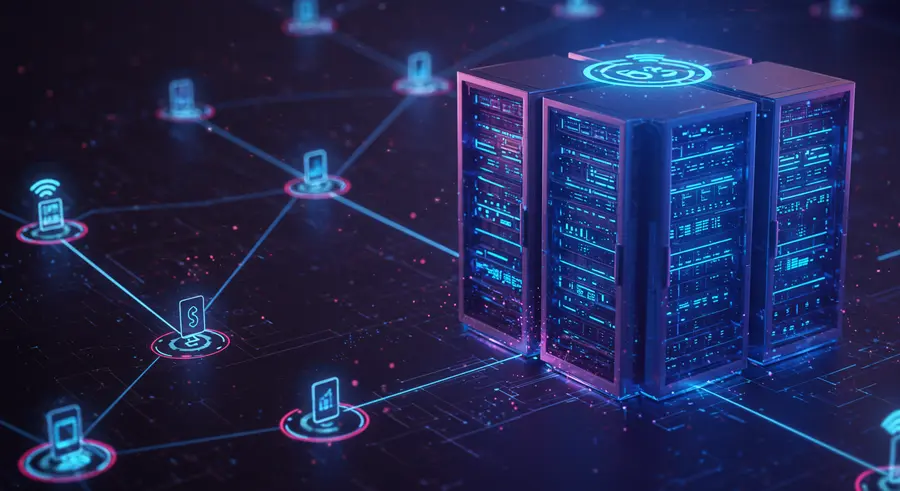Edge Computing: Supercharging 5G-Powered IoT
As the Internet of Things (IoT) landscape expands, generating unprecedented volumes of data, the synergy between 5G technology and Edge Computing is becoming increasingly critical. Edge Computing, by processing data closer to its source rather than in distant data centers, is poised to unlock the full potential of 5G-enabled IoT applications, ushering in an era of real-time responsiveness and enhanced efficiency.

What is Edge Computing?
Edge Computing is a distributed computing paradigm that brings computation and data storage closer to the sources of data generation – typically IoT devices and sensors. This proximity is key to reducing latency, minimizing bandwidth usage, and enabling faster decision-making. Instead of sending raw data to a centralized cloud for processing, edge computing performs initial processing and analysis "at the edge" of the network. For a deeper dive into its architecture, you might find articles on platforms like The Verge insightful.
Why Edge Computing is Crucial for 5G and IoT
The combination of 5G and IoT promises a hyper-connected world, but this vision relies heavily on the capabilities that edge computing provides:
- Reduced Latency: Many IoT applications, such as autonomous vehicles, industrial robotics, and remote surgery, demand near-instantaneous responses. 5G's low latency is a significant step, but edge computing further minimizes delays by processing data locally, avoiding round-trips to the cloud.
- Bandwidth Optimization: IoT devices can generate massive amounts of data. Transmitting all this data to the cloud can strain network bandwidth and incur significant costs. Edge computing filters and processes data locally, sending only essential information or aggregated insights to the cloud, thus conserving bandwidth.
- Improved Privacy and Security: Sensitive data generated by IoT devices can be processed and stored locally at the edge, reducing the risk associated with transmitting it over networks to centralized clouds. This is particularly important for applications in healthcare and critical infrastructure.
- Enhanced Reliability and Autonomy: Edge computing allows IoT systems to operate reliably even with intermittent cloud connectivity. Local processing ensures that critical functions can continue, making applications more resilient and autonomous.
How 5G Empowers Edge Computing for IoT
5G technology acts as a powerful catalyst for edge computing in the IoT ecosystem:
- Ultra-Reliable Low-Latency Communication (URLLC): A key feature of 5G, URLLC, provides the high-speed, low-delay communication necessary for edge servers to interact seamlessly with IoT devices in real-time.
- Enhanced Mobile Broadband (eMBB): 5G offers significantly higher bandwidth, allowing for rapid data transfer between IoT devices and edge nodes, and facilitating richer data streams for processing.
- Network Slicing: 5G enables the creation of virtual network slices, each tailored to specific application requirements. This means dedicated network resources can be allocated for edge computing workloads, guaranteeing performance and quality of service for critical IoT applications.
Use Cases of Edge Computing in 5G IoT
The convergence of edge computing, 5G, and IoT is paving the way for transformative applications across various sectors:
- Industrial IoT (IIoT) and Smart Factories: Real-time monitoring of machinery, predictive maintenance, and automated quality control powered by edge analytics, all connected via robust 5G networks.
- Autonomous Vehicles and Smart Transportation: Edge computing enables vehicles to process sensor data locally for rapid decision-making (e.g., collision avoidance) and communicate with other vehicles and infrastructure (V2X) with minimal delay, facilitated by 5G.
- Healthcare Monitoring: Wearable devices and remote patient monitoring systems can leverage edge computing for real-time analysis of vital signs, alerting medical professionals to critical events instantly, with 5G ensuring reliable data transmission.
- Smart Cities: Edge computing can process data from city-wide sensors for applications like intelligent traffic management, public safety surveillance, and efficient energy distribution, all interconnected through 5G. More information about smart city initiatives can often be found on government technology portals.
- Retail Analytics: In-store cameras and sensors can use edge processing for real-time customer behavior analysis, inventory management, and personalized experiences, with 5G providing seamless connectivity.
Challenges and the Future Ahead
Despite the immense potential, the widespread adoption of edge computing in the 5G IoT era faces challenges. These include managing a distributed computing infrastructure, ensuring security across numerous edge nodes, and developing standardized platforms and APIs. However, ongoing advancements in hardware, software, and networking technologies are continuously addressing these hurdles.
The future will likely see a hybrid model where edge and cloud computing work in tandem. Edge computing will handle immediate, latency-sensitive tasks, while the cloud will provide centralized storage, complex analytics, and long-term data management. The continued rollout and evolution of 5G networks will only accelerate this trend, making intelligent, responsive, and efficient IoT applications a pervasive reality.
Explore further by looking into how 5G & IoT Create Synergy.